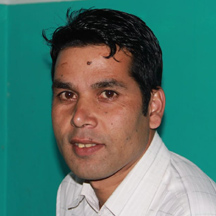Money
Farmers reap high cardamom prices as festivals near
The new large cardamom crop beats farmers’ expectations, hitting Rs2,100 per kg in early seasonal value spikes.
Ananda Gautam
At this time of year, large cardamom farmers from the eastern hills and mountains eagerly await the market in the plains to boom for their prized produce.
Among many large cardamom growers, Ganesh Thapa of Mikwakhola rural municipality too hauled his spice in Birtamod, Jhapa, around 240 kilometres downhill from Taplejung.
On Friday, he sold 120 kg of large cardamom for Rs2,100 per kg, making Rs252,000. He is elated.
The arrival of the new large cardamom crop has beat farmers' expectations this year, yet yields have been lower, resulting in early seasonal price spikes.
Traders say that the large cardamom market is experiencing a resurgence, driven by increasing international demand and seasonal consumption trends.
The price had reached Rs2,150 per kg in January and dropped slightly.
On Friday, the price of the spice reached Rs2,100 in Birtamod, the key market in eastern Tarai, where farmers sell their products.
The rise in the price has made growers happy as Dashain, the country’s longest festival, approaches. This festival fuels strong domestic demand, and for farmers, the rise in crop prices means a happy celebration due to their income.
From there, traders export large cardamom, one of the world's most expensive spices, to Siliguri, India.
Nepal is the world's biggest producer of large cardamom, with a 68 percent global market share. The spice is grown in Sikkim, Darjeeling and Bhutan. Large cardamom was introduced in Ilam from Sikkim in 1865.
The highest average price of large cardamom in Siliguri, India, on Thursday (August 29) was INR2,254 per kg or Rs2,660 per kg, as quoted at the Spices Board of India auction centre.
Thapa, who came to Phungling Bazar, Taplejung, sold large cardamom to Bhadra Bir Regmi, president of the Large Cardamom Traders Association.
“The first batch I had purchased was in July, at Rs2,000 per kg,” said Regmi. He said that the price around the festival time was Rs1,375 per kg.
Large cardamom grown in Nepal, known as Alaichi, is one of Nepal's largest export crops.
The large cardamom is harvested from mid-August to October.
In Taplejung, the largest cardamom-producing district, the crop is cultivated in seven rural municipalities and one municipality, except Phaktalung rural municipality-7, Olangchung Gola.
The cash crop is a major source of income in the district.
Nepali large cardamom—also known as ‘black gold’ or ‘black cardamom’—belongs to the botanical family Zingiberaceae and is one of the most expensive spices in the world. According to a government report, it is an evergreen, perennial, and herbaceous plant grown on north-facing hill slopes.
Balmani Baral, president of Large Cardamom Zone, Taplejung, said the traders had purchased the spice by keeping their cut, on top of the transportation cost.
“As the demand soars, there’s a buzz in the market. Nowadays, traders offer the same rate in Taplejung that is offered in Birtamod, Jhapa,” he said.
The surface travel distance between Taplejung and Jhapa is over 240 kilometres.
“The prices, however, keep fluctuating,” Baral said.
Large cardamom prices dropped to one of the lowest levels in Birtamode in December 2022, trading at 625 per kg, mainly due to the impact of Covid, when the supply chain was choked globally.
In 2014, large cardamom hit an all-time high of Rs2,500 per kg.
Since January, the large cardamom entrepreneurs association has projected that the price may breach the 2014 levels this year.
Ninety-eight percent of the large cardamom produced in Nepal is exported to India.
It is then reexported to Pakistan, Saudi Arabia, Qatar, and Bahrain, among other countries.
Pakistan is the largest importer of large cardamom, purchasing roughly 60 percent of India’s large cardamom exports. The local Muslim community uses large cardamom pods in biryani, a popular Pakistani dish, as a symbol of prosperity and wealth.
As the government has not fixed the price and there is a minimum support price, large cardamom is sold by the farmers at the traders' rate.
There is a huge price difference between the production's start and the harvest's end.
Nirmal Bhattarai, president of the Large Cardamom Entrepreneurs' Association of Nepal, said they buy large cardamom from farmers at the rate quoted by the traders in Birtamod and after assessing the international market rate.
Large cardamom is produced in 42 districts.
According to the agriculture ministry's statistics, large cardamom is produced in 12,500 hectares. Koshi Province produces most of the country's large cardamom, as the commodity is harvested in 11,000 hectares in this province.
The country produces 6,500 tonnes of large cardamom annually, 2,800 tonnes of which are produced in Taplejung district.
Gulf countries have a huge potential market for Nepali cardamom, but there is no direct export to those countries. Traders are unwilling to take risk exporting to those countries, as the Indian market is assured for them.
According to the Trade and Export Promotion Centre, cardamom export declined by 4.06 percent to Rs7.94 billion in the last fiscal year ended mid-July. Large cardamom produced in Nepal is organic and provides income to mostly low-income rural families.
Large cardamom exports rose 127 percent in the past ten years.




 18.12°C Kathmandu
18.12°C Kathmandu















